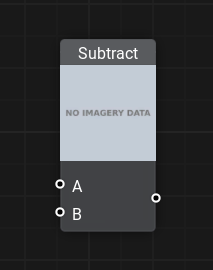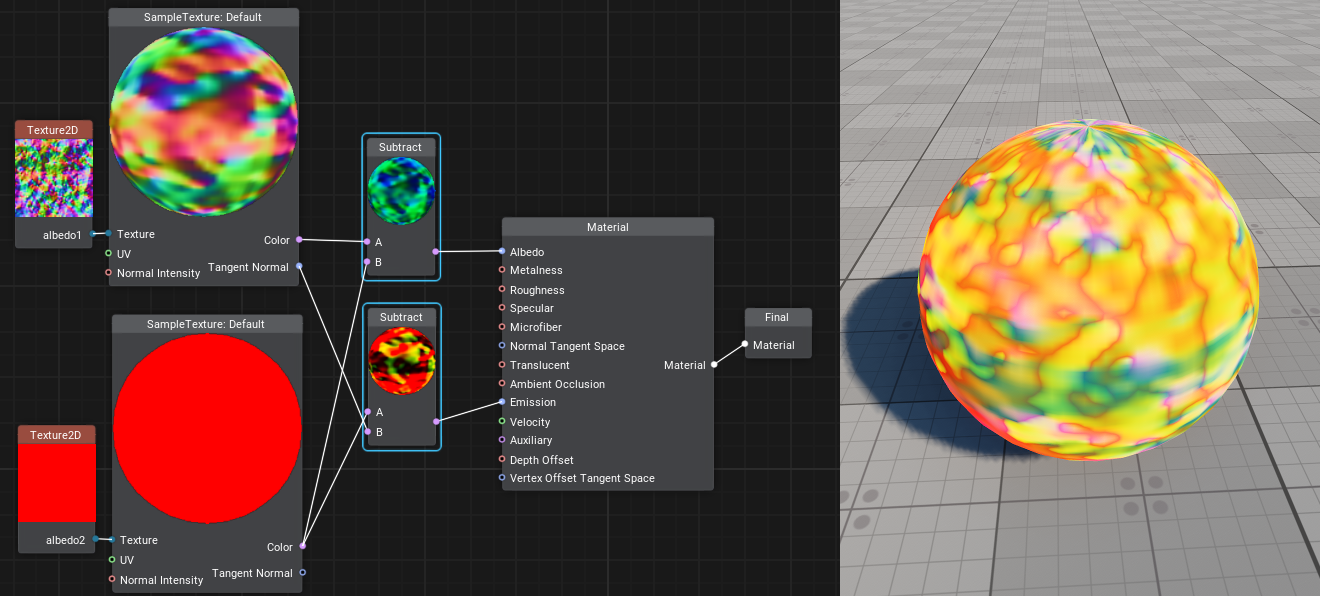Subtract Node

Description
Outputs the subtraction result of the two input values A and B. Subtraction between vector data types are done per-component.
If A and B have a different number of components, a cast is performed to match the one with the greater number of components.
Subtraction operation is not commutative so the order of values is important.
Usage Examples
Example 1
Subtracting two textures (non-commutative). The upper Subtract node takes color values from the first Sample Texture node (first texture) and subtracts the values from the second Sample Texture node (second texture) from them providing Albedo values for the Material. While the lower Subtract node does vice versa subtracting values of the first texture from the values of the second one providing Emission values for the Material producing a nice looking effect.
Gradient Mask with Subtract and Divide
Gradient mask controlling interpolation (along U-axis) between two given textures, with Slider1 controlling the position of the transition and Slider2 controlling transition softness. Outputs of two Sample Texture nodes are connected to the Lerp node that performs linear interpolation between texture values with an interpolation coefficient. To getthis coefficient we take U coordinate from the Vertex UV 0 node and subtract it from the current Slider1 value, the result is then passed to the Divide node to be divided by the value of Slider2, then the result is summed up with Slider1 value and passed to the Clamp node to be restricted to the [0;1] range. The result or linear interpolation provides Albedo values for the Material.

